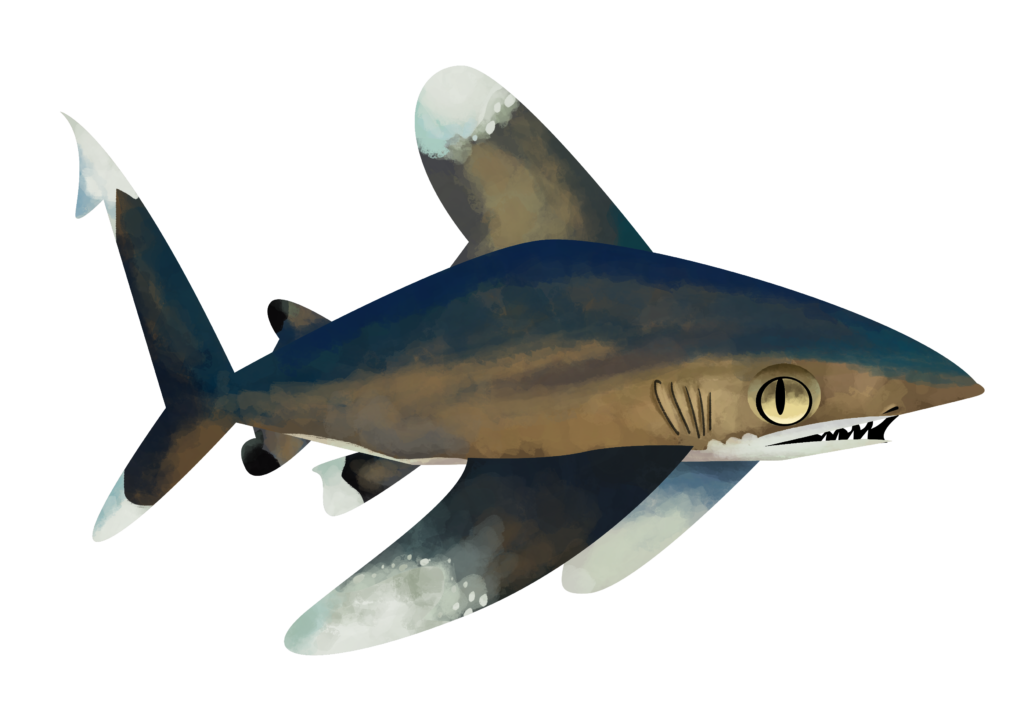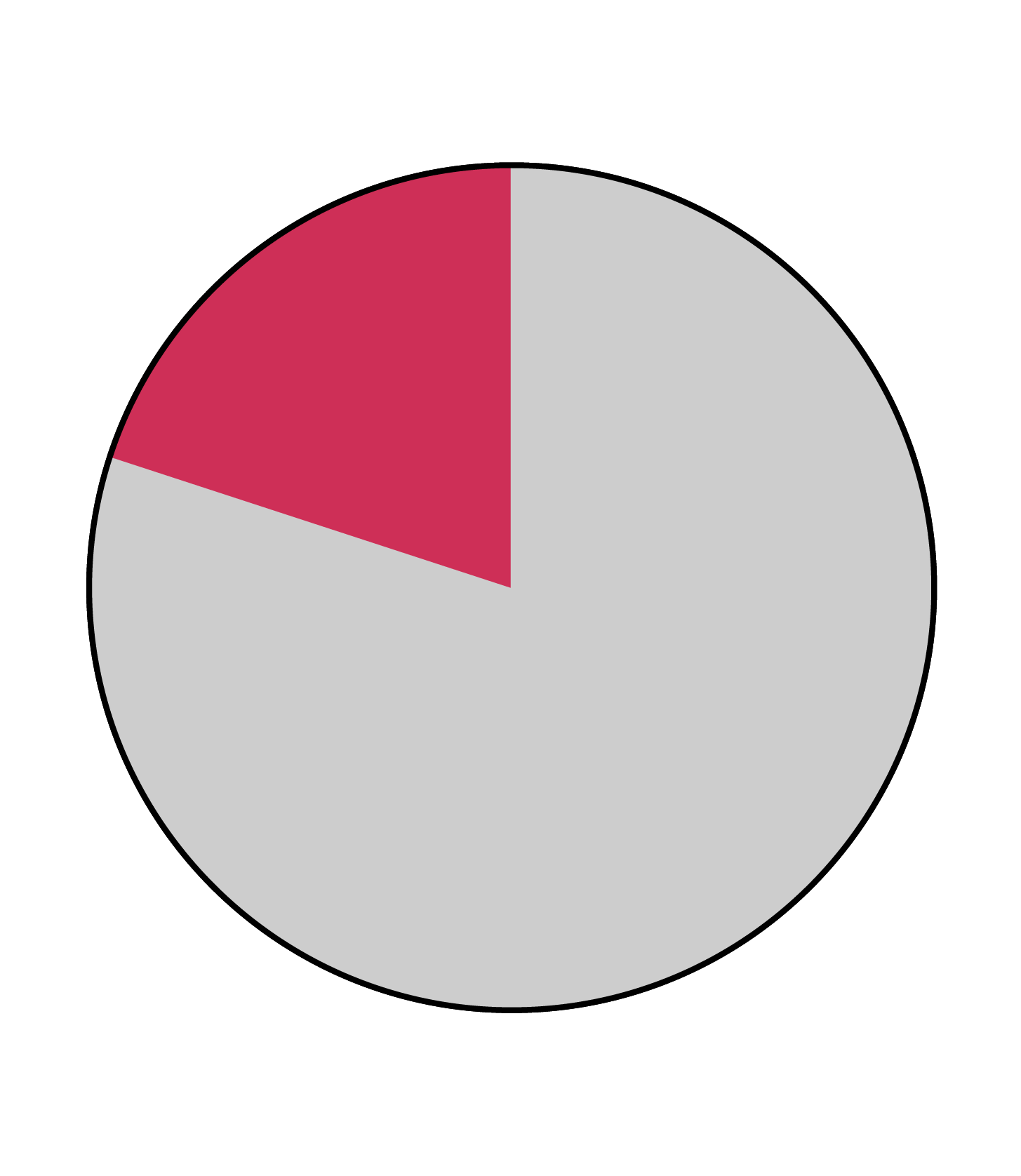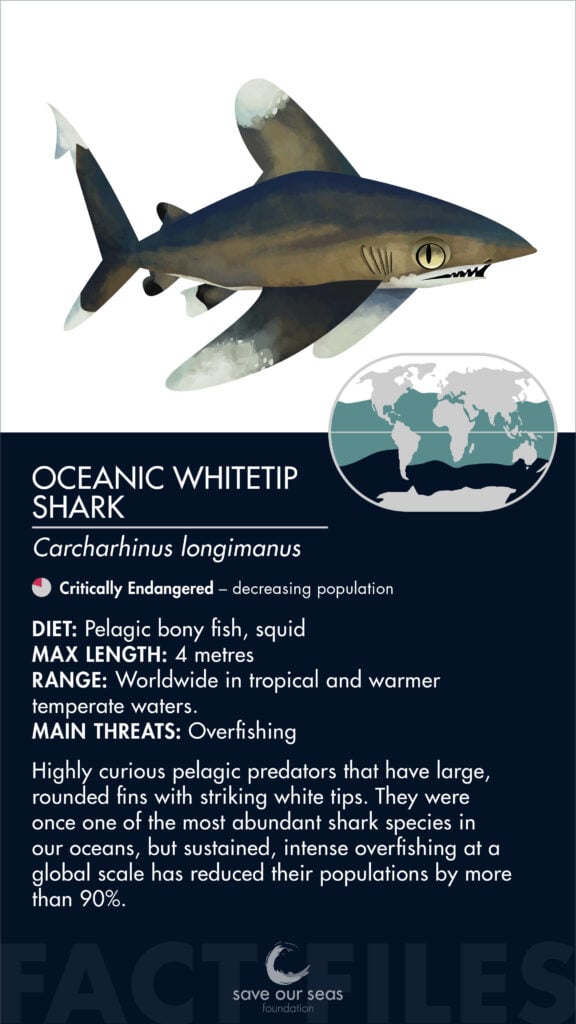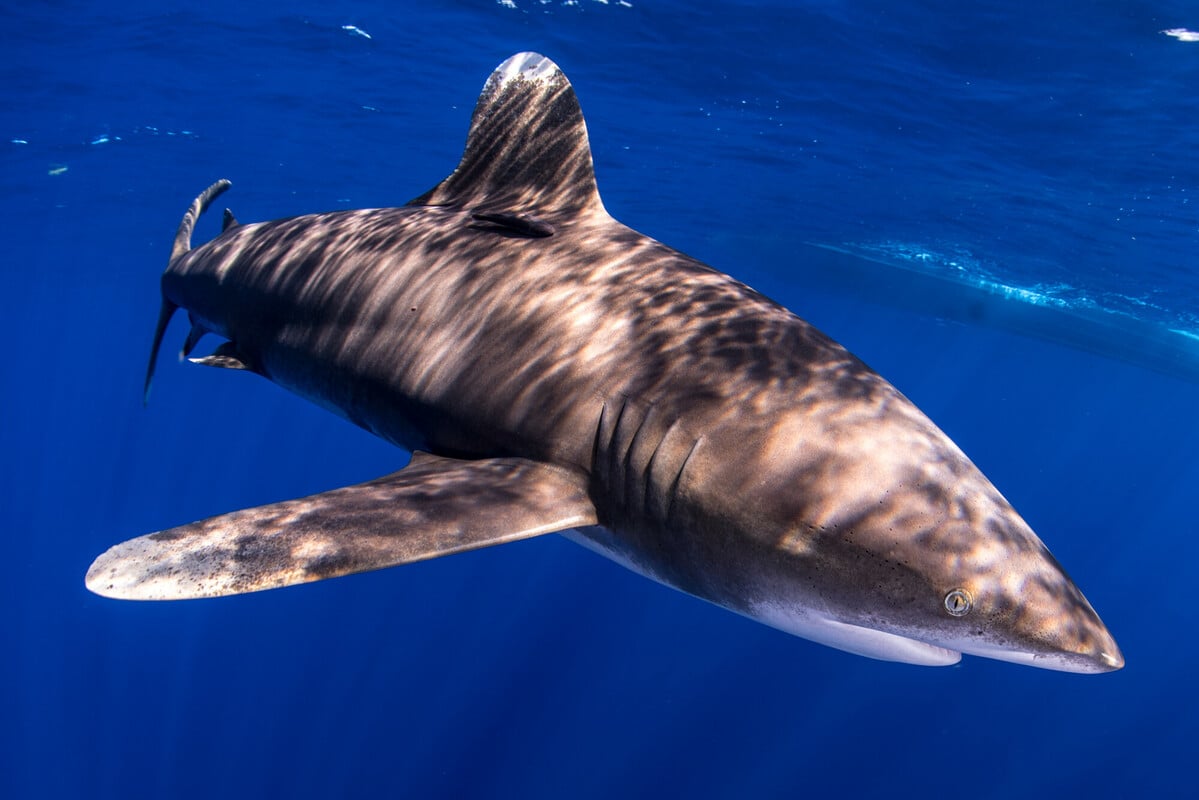Oceanic whitetip shark
Carcharhinus longimanus



Oceanic whitetips are highly curious pelagic predators that have large, rounded fins with striking white tips. They were once one of the most abundant shark species in our oceans, but sustained, intense overfishing at a global scale has reduced their populations by over 90% and left them critically endangered.
Identification
Oceanic whitetips can be readily identified by the prominent white tips on their large, rounded dorsal, pectoral and tail fins. They are otherwise mostly grey with a white underbelly.

Reproduction
Oceanic whitetips are viviparous, meaning they have a placenta and give birth to live young. After a gestation period of 10–12 months, litters of 1–15 pups are born free swimming, with each pup measuring approximately 0.6 m. Estimates of age at maturity vary depending on location, but the range is considerable at 4–15 years.
Habitat and geographical range
Worldwide in tropical and warmer temperate waters. They are a pelagic species, typically found in open ocean but occasionally near shore when there is very deep water nearby.

Diet
Oceanic whitetips feed primarily on pelagic fish such as jacks, tuna, mackerel and cephalopods such as squid. They will also aggregate in large numbers around carrion such as dead whale carcasses to feed on the calorific blubber.
Threats
Oceanic whitetips are severely threatened by overfishing, most significantly by commercial longliners on the high seas. They are also caught in purse seine and gillnet fisheries, and are mainly used for their fins and meat, as well as liver oil and skin. Overfishing has been so intense that it is thought their populations may have declined by more than 90% globally, and as such they are considered Critically Endangered by the IUCN.
Relationship with humans
Oceanic whitetips’ primary interaction with humans is through high-seas fisheries, as their pelagic nature otherwise rarely brings them into contact with people. However, they are known to have predated on survivors of shipwrecks and crashed aircraft. The most famous example is of the USS Indianapolis, where survivor accounts suggest that many died from shark bites, with oceanic whitetips believed to be the dominant species. Despite their declines, there are still a few locations where they are encountered reliably (e.g. The Bahamas and the Red Sea) by ecotourism operators.
Fun Facts
They never stop swimming! They rely on ram ventilation, meaning they have to swim constantly to force water over their gills to breathe.
Nicknamed the “Dark Knight of the Ocean;” they tend to hunt mostly at nighttime, but also in the daytime if an easy opportunity presents itself.
In the film Blue Water, White Death, which sought to capture the first underwater footage of white sharks, filmmakers set off to sea from Durban following reports of an abundance of ‘white’ sharks scavenging on whales caught by the local whaling industry. It turned out the sharks were in fact Oceanic whitetips, but it gave the team an opportunity to record what is probably the best representation of how abundant they must once have been.
Oceanic Whitetips, formerly one of the most abundant sharks in the ocean, are under serious threat of becoming extinct; classified as Critically endangered on the IUCN Red List
References
David A. Ebert. et al, 2021, Sharks of the World: A Complete Guide.
IUCN Red List of Threatened Species, Oceanic whitetip shark: Carcharhinus longimanus
Florida Museum, 2018, Carcharhinus longimanus
NOAA Fisheries, Oceanic Whitetip Shark
Oceana, 2021, Oceanic whitetip shark









